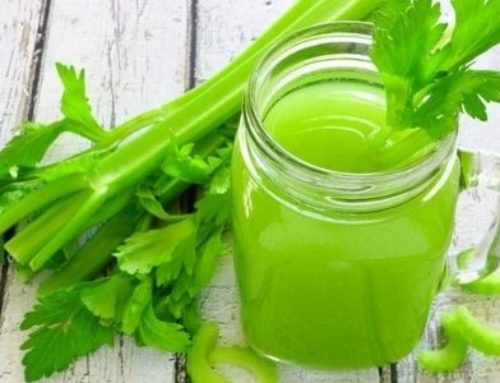
“Eat your greens; they’re good for you!”
Most of us have heard this at one time or another, maybe from our parents, from a well-meaning partner or a cheeky friend. But just what is it that makes leafy greens so good for you?
What are they?
Leafy greens are those highly nutritious members of the vegetable family that can add texture to your sandwiches, flavour to your soups and salads and colour to your plate. There is an amazing array of different leafy greens, and each country seems to have its own favourites. They include typical salad staples like baby spinach and lettuce but also plenty of others like broccoli, brussel sprouts, and of course kale. Then you have your less common leafy greens like beetroot and turnip leaves. Some leafy greens are mild and sweet tasting (like lettuce and cabbage), some have a stronger slightly bitter taste (like spinach and silverbeet), and others have a peppery bite (like rocket and mustard greens).
And don’t forget herbs! They are highly nutritious and are great for adding plenty of flavour to almost any dish.
Some types of leafy greens
- Lettuce (cos, butter lettuce, red leaf, green leaf, iceberg)
- Spinach
- Silverbeet
- Rocket
- Baby spinach
- Cabbage
- Kale
- Broccoli
- Brussel sprouts
- Watercress
- Sorrel
- Mustard greens
- Beetroot greens
- Turnip greens
- Parsley
- Basil
- Coriander
- Mint
- And many, many more…
What makes them good for me?
Leafy greens are rightly considered to be nutritional superstars. They are rich sources of vitamins, minerals and fibre, but at the same time are extremely low in fat and sugar. This makes them an ideal food to bulk up and flavour your meals with, without adding extra calories – nature’s perfect weight-management food! Even better, including plenty of them in your diet has also been shown to help reduce your risk of obesity, cardiovascular disease, diabetes and even certain cancers!
These are some of the health-promoting nutrients that you can get from leafy greens:
- Vitamin A helps with good vision and healthy immune function. Leafy greens are a good source of pro-vitamin A carotenoids like beta-carotene which your body can use to make vitamin A.
- Vitamin C required for the growth and repair of tissues throughout your body, including bones and teeth. It can also function as an antioxidant, protecting your DNA from damage by free radicals. Vitamin C can help your body absorb iron from plant-based (non-haem) sources like beans, lentils and broccoli.
- Vitamin K plays an important role in helping your blood to clot which stops continuous bleeding when we have a cut or bruise. There is also increasing evidence that vitamin K improves bone health and reduces the risk of bone fractures, but researchers are still looking into this.
- Folate is a B-vitamin essential for the healthy development in early pregnancy, particularly in preventing neural tube defects. It is also important in DNA synthesis and the building or repairing of tissues like red blood cells.
- Potassium is an electrolyte that helps keeps fluids balanced in your blood and tissues. Potassium also helps to control blood pressure and leafy greens are a particularly good source.
- Magnesium is essential for hundreds of different processes in your body, including energy production, bone development, mineral balance, muscle contraction and protein and DNA synthesis.
- Calcium is essential for healthy bones and teeth. While dairy foods are the best source, some leafy greens contain high amounts of calcium as well, particularly kale, rocket and bok choy.
- Fibre helps to make you feel full and aids in weight loss. Fibre is essential in keeping your digestive system healthy and keep your bowel movements regular. Eating a diet high in fibre has been shown to reduce your risk of a range of health conditions including diverticular disease, heart disease, diabetes and bowel cancer (Australia’s 3rd most common cancer).
Which leafy greens are the healthiest?
Kale seems to be the clear contender for the title of most highly regarded leafy green. But is all the hype true? Well, kale definitely has a lot of good things going for it. It’s high in vitamins A, C, K, B6, as well as calcium and potassium, but if you’re not a fan you don’t need to worry. A number of other greens are actually more nutrient dense overall than kale. A recent study that assessed and ranked 41 different vegetables according to their nutrient density placed kale at only number 15. This was based on 17 specific vitamins and minerals. The top leafy greens were watercress, bok choy, silverbeet and beetroot greens.
The best thing you can do is eat a good variety of different leafy greens, and be sure to pick the ones you like best!
How much should I eat?
So you might already be including some leafy greens, but are you getting enough?
For optimum health we should be aiming to eat 5-6 serves of veg each day. With vegetable intake, variety is key to make sure you get all of the nutrients, vitamins and minerals to keep you healthy, so make sure to mix it up. And don’t forget to include those leafy greens! A serve of leafy greens is 75g, or about 1 cup of raw greens (like chopped lettuce, kale or rocket) or ½ cup of cooked greens (like broccoli, cabbage or English spinach).
How do I keep them fresh?
So you’ve decided to add more leafy greens to your life, and you go out and buy a generous helping of silverbeet, a bunch of kale and a pack of rocket. You open your fridge a couple of days later only to find your silverbeet has gone yellow, your kale smells funny and your rocket looks slimy and horrible. If this sounds familiar, you might find these tips useful to help make your greens stay fresh longer.
Choosing good greens:
If your greens look good when you buy them, they’ll taste better and last longer. Pick leafy greens with a vibrant green colour and a fresh crisp texture. Yellowing leaves are a sign of age, and can mean that the taste has deteriorated. Stay away from leaves with dark, slimy bits – these have started to spoil. This can sometimes happen in bags of packed salad mix or baby spinach because of the higher moisture in the bag, so it’s worth checking out the pack before you buy and picking the ones with the best ‘use by’ date.
Storage tips:
The secret to storing leafy greens, especially delicate ones like herbs or rocket, is keeping them in a cool (but not too cool) climate with a small amount of moisture. If it’s too dry, the leaves tend to wilt, and if it’s too wet they will rot. I’ve learnt from experience not to keep basil in the coldest part of the fridge (usually against the back) or it can get black spots or worse still end up frozen solid!
The vegetable crisper in your fridge is designed to retain humidity and is usually a little warmer than other parts of the fridge, so it’s one of the best places to store your leafy greens. I like to store mine in a loosely folded plastic bag, but for small delicate greens a container lined with paper towels also works. You can also try using PEAKfresh bags which help to limit the gases that cause vegetables to spoil.
If you do end up with a wilted bunch of greens, you can refresh them by cutting of the ends and submerging the leaves in cool water for a couple of hours.
Cooked or raw? Fresh or frozen?
So, how should you buy and prepare your leafy greens to get the most nutritional benefit out of them? Well, it’s actually best to include some of each! While some nutrients like vitamin C are highly heat sensitive and will degrade during cooking, the cooking process can actually increase bioavailability of certain phytochemicals and nutrients in leafy greens. There’s also one big up-side to cooking your greens: it can make it easier to eat more!
There is little difference in nutrient content between fresh and frozen vegetables, so don’t feel like you need to avoid those super-convenient packs of frozen broccoli or spinach. In fact, with longer storage frozen vegetables can retain more nutrients than fresh. If you buy some of each when you do your shopping, you can start with your fresh greens and move on to the frozen ones later in the week.
Some of my favourite greens:
Bok choy
This Asian green tastes great in stir fries, as it keeps its crunch in the finished dish. It only needs to be cooked for a minute or so. Bok choy also tastes great in Asian soups and makes an excellent side dish when lightly steamed.
Try:
Salmon with Asian Greens and Rice
Chicken, Cashew and Vegetable Stir Fry
Silverbeet
Silverbeet, also called Swiss chard, is used a lot in Mediterranean and Middle Eastern cooking. It can be a bit of a contentious green; some people love its strong slightly bitter taste, while others not so much. The trick with silverbeet is to slice it thinly (since it’s quite fibrous) and cook the leaves briefly (a couple of minutes is usually enough) but the stalks a bit longer (they taste great sautéed, but can also be stewed, steamed or boiled). It pairs really well with lemon or feta, and can make a great side dish if lightly sautéed with garlic. Try adding it to potato bakes, legume dishes and meat stews. A really good thing about silverbeet is its great value for money – a bunch of silverbeet generally costs about the same price as a bunch of English spinach, but it serves at least twice as many people!
Try:
Beetroot greens
With their pretty red and green leaves, baby beetroot leaves make a very attractive and tasty addition to salads. A good place to find them is in those mixed leaf bags at the supermarket. Mature beetroot leaves aren’t used as commonly, but they can lend a lovely earthy flavour to soups or stews. They are best eaten cooked and you can actually eat the stems as well. If you’re feeling adventurous, next time you buy a bunch of beetroot try using the chopped leaves and stems sautéed with feta or put them in a hearty beef or chickpea stew.
Try swapping them into :
If you’d like further help with your nutrition please click below:
This article was written by Julia Christenson, intern from the University of Canberra at The Healthy Eating Hub.
References:
Australian Institute of Health and Welfare 2014. Cancer in Australia: an overview 2014. Cancer series No 90. Cat. no. CAN 88. Canberra: AIHW.
Di Noia, J. Defining Powerhouse Fruits and Vegetables: A Nutrient Density Approach. Prev Chronic Dis 2014; 11:130390
Foodworks 20**, Xyris Software, High Gate Hill, Qld, Australia.
Miller, S.R. & Knudson, W.A. 2014, “Nutrition and Cost Comparisons of Select Canned, Frozen, and Fresh Fruits and Vegetables”, American Journal of Lifestyle Medicine, vol. 8, no. 6, pp. 430-437.
National Health and Medical Research Council. Nutrient Reference Values for Australia and New Zealand. Canberra, Australia: NHMRC. Available from: https://www.nrv.gov.au/nutrients
National Health and Medical Research Council 2013. National Health and Medical Research Council. Australian dietary guidelines. Canberra: NHMRC; 2013
Rickman, J.C., Barrett, D.M. & Bruhn, C.M. 2007, Nutritional comparison of fresh, frozen and canned fruits and vegetables. Part 1. Vitamins C and B and phenolic compounds, Journal of the science of food and agriculture, vol. 87, no. 6, pp. 930-944.
Rickman, J.C., Bruhn, C.M. & Barrett, D.M. 2007, Nutritional comparison of fresh, frozen, and canned fruits and vegetables II. Vitamin A and carotenoids, vitamin E, minerals and fiber, Journal of the science of food and agriculture, vol. 87, no. 7, pp. 1185-1196.





